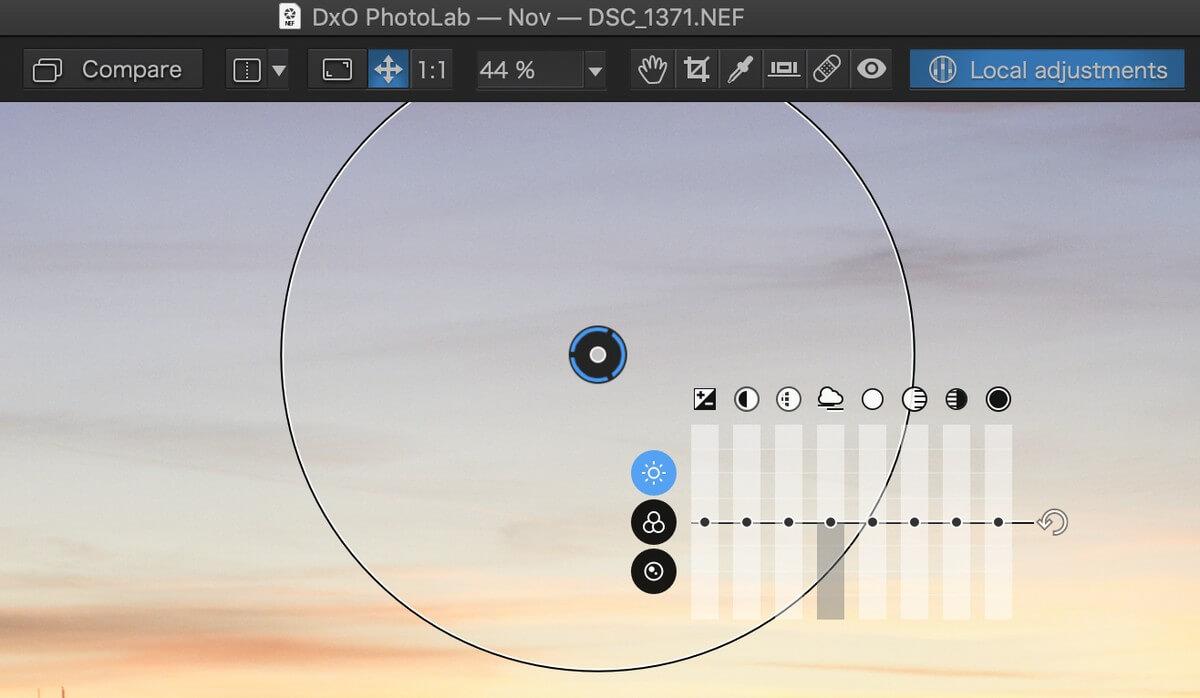

- DXO PHOTOLAB 2 TUTORIAL HOW TO
- DXO PHOTOLAB 2 TUTORIAL MANUAL
- DXO PHOTOLAB 2 TUTORIAL FULL
- DXO PHOTOLAB 2 TUTORIAL PORTABLE
- DXO PHOTOLAB 2 TUTORIAL SOFTWARE
You just select the images that you want to rename and then select Image > Rename Selected Images in the menu. This is very easy to use in the PhotoLibrary. Batch RenamingĭxO has added Batch Renaming to the PhotoLab feature set. This is where you can make any edits and it’s where the real strength behind PhotoLab and DxO optical assessments comes into play. Helpfully, hovering the cursor over an image reveals its key data.ĭouble-clicking on an image opens it in the Customize section. You can filter the images in a folder using aspects such as star ratings, file types and tags. The PhotoLibrary section is where you browse images. If the necessary correction modules aren’t already installed, it prompts you to download them.
DXO PHOTOLAB 2 TUTORIAL SOFTWARE
What’s more, when you preview a folder of images, the software automatically checks the EXIF data to find out what cameras and lenses were used. Unlike Adobe Lightroom, there’s no need to import images. One of the nice features of PhotoLab 4 is that it works around your filing structure.
DXO PHOTOLAB 2 TUTORIAL FULL
The Essential version has the optical corrections and a few additional controls but DxO PhotLab 4 Elite, reviewed here, has the full range of tools including the denoising technology. This was introduced as a result of DxO buying Nik Collection from Google.ĭxO PhotLab 4 is available in two versions, Essential and Elite. Like the previous versions of DxO PhotoLab, PhotoLab 4 enables localised adjustment using U Point technology.

Consequently, when you use PhotoLab for the first time, you’re prompted to download the necessary correction modules. These corrections are available for different camera and lens combinations.
DXO PHOTOLAB 2 TUTORIAL HOW TO
There’s also a batch renaming feature, an editing history tool and a new Instant Watermarking feature.ĭxO’s in-depth understanding of optical flaws and how to correct them is central to PhotoLab. It introduces a new dynamic workspace and upgraded demosaicing and denoising technology called DxO DeepPRIME that benefits from artificial intelligence and deep learning.
DXO PHOTOLAB 2 TUTORIAL PORTABLE

Intelligent algorithms adapt settings to your gear as well as to image content Processing large series of photos is no longer a nightmare Simulates a graduated ND filter and lets you apply artistic effects.Īllows you to remove dust spots or unwanted objects from your photos. Manually select your editing area by simply clicking on the part of your image you want to adjust.įreely paint and manually adjust small or large areas of your image.
DXO PHOTOLAB 2 TUTORIAL MANUAL
Give your photos your own artistic touch by manually applying selective corrections to specific areas of your image, using exclusive DxO Local Adjustment Tools that include: Control points (U Point technology), graduated filters, manual and automatic brushes, automatic repair tool, etc. Leverage your gear with tailored automatic corrections based on DxO's renowned scientific expertise in measurement and calibration.ĮXPRESS YOUR CREATIVITY WITH LOCAL ADJUSTMENTS: INTRODUCING U POINT® Intelligently boosts local contrast and effectively removes distant haze.Īutomatically denoises high ISO RAW images and recovers accurate details and colors based on our exclusive algorithms. Optimizes the dynamic range of your image and brings out the details from both under- and overexposed areas. Take control on every aspect of your photos: effectively remove noise, get rid of light constraints, recover color details, apply sophisticated optical corrections, and enhance details. Produce RAW and JPEG images with the best image quality, effortlessly: DxO PhotoLab provides a complete set of smart assisted corrections that you can manually fine-tune at any time.


 0 kommentar(er)
0 kommentar(er)
